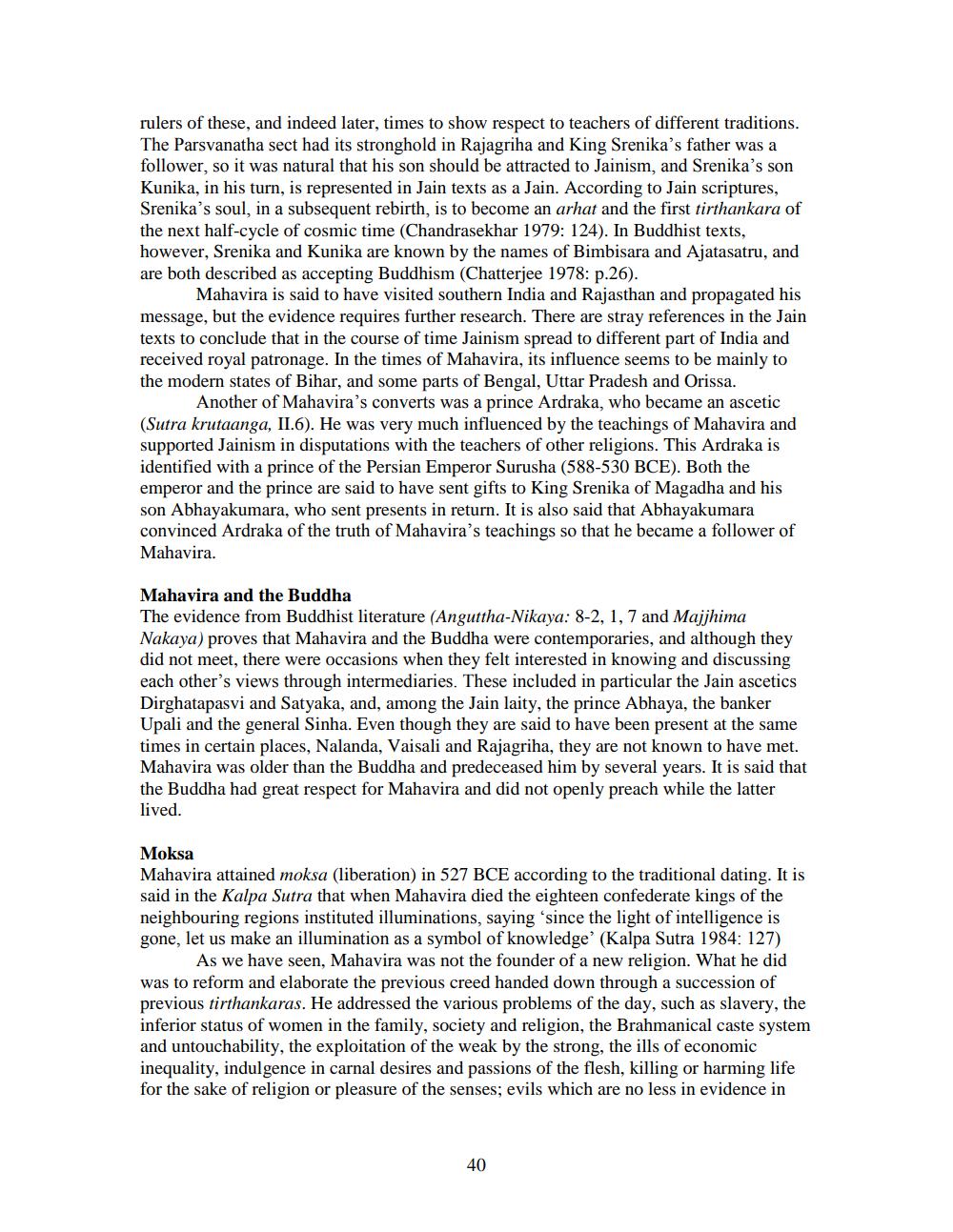________________
rulers of these, and indeed later, times to show respect to teachers of different traditions. The Parsvanatha sect had its stronghold in Rajagriha and King Srenika's father was a follower, so it was natural that his son should be attracted to Jainism, and Srenika's son Kunika, in his turn, is represented in Jain texts as a Jain. According to Jain scriptures, Srenika's soul, in a subsequent rebirth, is to become an arhat and the first tirthankara of the next half-cycle of cosmic time (Chandrasekhar 1979: 124). In Buddhist texts, however, Srenika and Kunika are known by the names of Bimbisara and Ajatasatru, and are both described as accepting Buddhism (Chatterjee 1978: p.26).
Mahavira is said to have visited southern India and Rajasthan and propagated his message, but the evidence requires further research. There are stray references in the Jain texts to conclude that in the course of time Jainism spread to different part of India and received royal patronage. In the times of Mahavira, its influence seems to be mainly to the modern states of Bihar, and some parts of Bengal, Uttar Pradesh and Orissa.
Another of Mahavira's converts was a prince Ardraka, who became an ascetic (Sutra krutaanga, II.6). He was very much influenced by the teachings of Mahavira and supported Jainism in disputations with the teachers of other religions. This Ardraka is identified with a prince of the Persian Emperor Surusha (588-530 BCE). Both the emperor and the prince are said to have sent gifts to King Srenika of Magadha and his son Abhayakumara, who sent presents in return. It is also said that Abhayakumara convinced Ardraka of the truth of Mahavira's teachings so that he became a follower of Mahavira.
Mahavira and the Buddha The evidence from Buddhist literature (Anguttha-Nikaya: 8-2, 1, 7 and Majjhima Nakaya) proves that Mahavira and the Buddha were contemporaries, and although they did not meet, there were occasions when they felt interested in knowing and discussing each other's views through intermediaries. These included in particular the Jain ascetics Dirghatapasvi and Satyaka, and, among the Jain laity, the prince Abhaya, the banker Upali and the general Sinha. Even though they are said to have been present at the same times in certain places, Nalanda, Vaisali and Rajagriha, they are not known to have met. Mahavira was older than the Buddha and predeceased him by several years. It is said that the Buddha had great respect for Mahavira and did not openly preach while the latter lived.
Moksa Mahavira attained moksa (liberation) in 527 BCE according to the traditional dating. It is said in the Kalpa Sutra that when Mahavira died the eighteen confederate kings of the neighbouring regions instituted illuminations, saying 'since the light of intelligence is gone, let us make an illumination as a symbol of knowledge' (Kalpa Sutra 1984: 127)
As we have seen, Mahavira was not the founder of a new religion. What he did was to reform and elaborate the previous creed handed down through a succession of previous tirthankaras. He addressed the various problems of the day, such as slavery, the inferior status of women in the family, society and religion, the Brahmanical caste system and untouchability, the exploitation of the weak by the strong, the ills of economic inequality, indulgence in carnal desires and passions of the flesh, killing or harming life for the sake of religion or pleasure of the senses; evils which are no less in evidence in
40




